How to Survive a Bridge Collapse
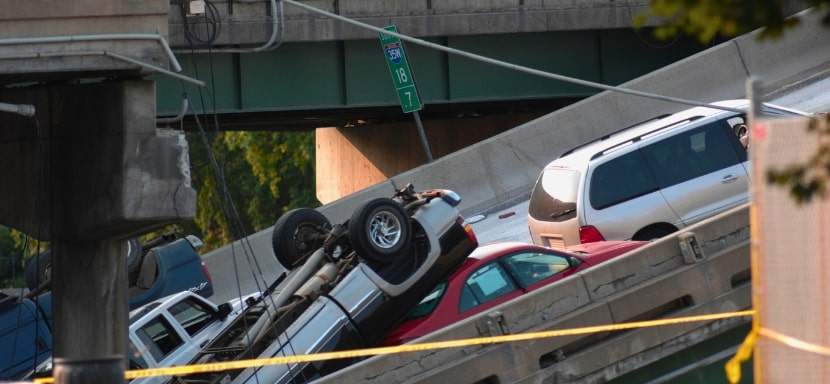
Surviving a Bridge Collapse: What to Do and How to Be Prepared
When a bridge collapses unexpectedly, knowing the proper steps can mean the difference between life and death, equipping you with essential survival strategies.
Knowing what to do when a bridge unexpectedly collapses can make the difference between life and death. This guide provides crucial steps and advice to help you survive a bridge collapse.
It emphasizes the importance of being prepared, taking immediate action, and applying post-collapse survival strategies. Whether you are a driver, passenger, or pedestrian, being informed and prepared can significantly increase your chances of survival.
Key Points
- Stay Calm and Act Quickly: Assess the situation, avoid panic, and make swift decisions to ensure your safety.
- Protect Yourself: Use available cover to shield from debris, and adopt a protective posture during the collapse.
- Be Prepared: Familiarize yourself with emergency procedures, keep an emergency kit handy, and be aware of the warning signs of structural failure.
Top Ten Quick Tips for Surviving a Bridge Collapse
In the event of a bridge collapse, quick and decisive actions can save your life. Here are the top ten tips to help you survive such a catastrophe:
- Stay Calm: Keep a clear mind to make better decisions under pressure.
- Assess Your Surroundings: Quickly evaluate the situation to determine the safest action.
- Stop Your Vehicle Safely: If driving, gently brake and avoid causing collisions.
- Exit the Vehicle Immediately: Leave your car and move to a safer location away from the collapse.
- Move Away from the Edge: If on foot, head towards the center or nearest exit to avoid falling off the bridge.
- Protect Yourself from Debris: Use sturdy objects to shield yourself from falling debris.
- Adopt a Protective Posture: If the bridge is in free fall, cover your head and neck with your arms and tuck your knees to your chest.
- Avoid Hazardous Areas: Stay clear of fires, gas leaks, and deep water.
- Signal for Help: Use your phone, bright clothing, or flashlights to attract rescuers’ attention.
- Prepare an Emergency Kit: Keep essentials like water, food, a first aid kit, and flashlights readily accessible in your vehicle or bag.
Understanding Bridge Collapse Scenarios
Bridge collapses can occur due to natural disasters, structural failures, or accidents. Each scenario demands a unique response, but some common principles apply universally.
Causes of Bridge Collapses
Understanding the causes of bridge collapses can help you recognize warning signs and react appropriately. Common causes include:
Natural Disasters: Earthquakes, floods, and severe storms can compromise bridge integrity.
Structural Failures: Aging infrastructure, poor construction, and maintenance issues can lead to sudden collapses.
Accidents: Vehicular collisions or explosions can severely damage bridges.
Recognizing Early Warning Signs
Awareness of the early warning signs of a bridge collapse can give you a critical head start in reacting. Look for:
Visible Cracks: Large or rapidly growing cracks in the bridge’s structure.
Unusual Sounds: Creaking, groaning, or snapping noises indicating stress or breakage.
Swaying Movements: Excessive swaying or vibrations, especially during heavy traffic or high winds.
Immediate Actions to Take During a Bridge Collapse
Your immediate response during a bridge collapse is crucial. Follow these steps to maximize your chances of survival.
Stay Calm and Assess the Situation
Panic can cloud your judgment. Take a deep breath and quickly assess your surroundings to determine the safest action.
If You’re in a Vehicle
Stop Safely: If possible, stop your vehicle without causing a collision. Use your brakes gently to avoid skidding.
Exit Quickly: Leave your vehicle as fast as you can. Vehicles are prone to getting trapped or sinking.
If You’re on Foot
Move Away from the Edge: Head towards the center of the bridge if it’s more stable or towards the nearest exit if the collapse starts from the center.
Avoid Large Gaps: Be cautious of falling debris and large gaps in the bridge.
Protect Yourself
Use Available Cover: If debris is falling, use a sturdy object to shield yourself.
Brace for Impact: If the bridge is in free fall, adopt a protective posture: cover your head and neck with your arms and tuck your knees to your chest.
Post-Collapse Survival Strategies
The first step is to survive the initial collapse. Post-collapse, you need to stay safe and signal for help.
Avoid Hazards
Watch for Fires and Explosions: Gas lines and fuel tanks can ignite. Move away from any flames or the smell of gas.
Steer Clear of Water: If the bridge collapses into water, try to swim to the surface and away from strong currents.
Signal for Help
Use Your Phone: If you have a signal, call emergency services. Provide them with your location and details of the collapse.
Visible Signals: Use bright clothing, reflective materials, or flashlights to make yourself visible to rescuers.
First Aid
Treat Injuries: Address any immediate injuries using basic first aid. Stop any bleeding and immobilize broken limbs.
Stay Warm: If wet or in a cold environment, try to stay warm and dry to avoid hypothermia.
Cooperate with Rescuers
Follow Instructions: Rescuers are trained to handle such situations. Follow their instructions carefully.
Stay Put: Unless your location is unsafe, stay where rescuers can find you.
Did You Know?
The United States has over 690,000 bridges, and while sophisticated systems aim to prevent failures, recent incidents indicate potential issues. In 2024, the American Society of Civil Engineers and the federal government reported that 46,000 bridges are in poor condition and 17,000 are at risk of collapse from a single impact.
Long-Term Preparedness
While it’s impossible to predict every disaster, being prepared can significantly increase your chances of survival.
Emergency Kits
Build a Kit: A basic bug-out kit should include essentials like water, food, a first aid kit, flashlights, and blankets.
Keep it Accessible: Store your kit in a place you can easily reach during an emergency.
Regular Drills
Practice Scenarios: Conduct regular drills with your family or colleagues to ensure everyone knows what to do in case of a bridge collapse.
Review Escape Routes: Familiarize yourself with the quickest and safest exits on frequently traveled bridges.
Stay Informed
Monitor Updates: Monitor local news and weather reports that could indicate potential bridge hazards.
Report Issues: If you notice structural concerns or unusual signs on a bridge, report them to authorities immediately.
Survive a Bridge Collapse
Surviving a bridge collapse involves quick thinking, immediate action, and preparedness. Understanding the causes, recognizing early warning signs, and knowing what to do during and after a collapse can significantly improve your chances of survival. Always stay calm, protect yourself, and follow safety protocols to navigate such a catastrophic event.
FAQs
What should I do if my car is stuck on a collapsing bridge?
If your car is stuck, quickly unbuckle your seatbelt, grab any essential items, and exit. Move away from the collapse area as fast as possible. Your priority should be to get to a safe location.
How can I protect myself from falling debris during a bridge collapse?
Use a sturdy object, such as a vehicle door or a piece of the bridge, to shield yourself. Cover your head and neck with your arms to protect vital areas. Staying low to the ground can also minimize exposure to falling debris.
What should I include in an emergency kit for bridge collapses?
Your kit should have water, non-perishable food, a first aid kit, flashlights, batteries, blankets, a whistle, and a multi-tool. Ensure it is easily accessible. Personalize the kit based on your specific needs and keep it current.
How can I signal for help if I’m trapped after a bridge collapse?
If you have a signal, use your phone to call emergency services. If not, use visible signals like bright clothing, reflective materials, or flashlights to attract attention. Whistles and loud noises can also help draw rescuers to your location.
What are the signs that a bridge might be about to collapse?
Look for large or growing cracks, unusual creaking or snapping sounds, and excessive swaying or vibrations, especially during heavy traffic or adverse weather conditions. Report any such signs to authorities immediately.
How can I prepare for a bridge collapse if I frequently travel over bridges?
Familiarize yourself with the bridges you travel over, know the quickest exit routes, and keep an emergency kit in your vehicle. Regularly review safety procedures with family or colleagues. Stay informed about the condition of bridges you use often.
Conclusion: Be Prepared and Stay Safe During a Bridge Collapse
Knowing how to survive a bridge collapse can save lives. Stay calm, act quickly, and be prepared to handle both immediate dangers and the aftermath. By understanding the risks and having a plan in place, you can navigate such disasters with greater confidence and safety. Preparation and awareness are your best tools for surviving a bridge collapse and ensuring safety in such critical situations.
Most Famous Bridge Collapses in History
Examining some of the most infamous bridge collapses throughout history reveals important insights into engineering failures and the importance of infrastructure maintenance. Here are notable examples, listed from oldest to most recent:
- The Tay Bridge Disaster (1879): This tragic event occurred in Scotland when the bridge collapsed during a storm, taking a train and 75 lives with it.
- The Quebec Bridge Collapse (1907): In Canada, this disaster resulted from engineering errors, leading to the deaths of 75 workers.
- The Silver Bridge Collapse (1967): In the United States, the failure of a suspension chain led to the bridge’s collapse, killing 46 people.
- The West Gate Bridge Collapse (1970): In Australia, a construction accident caused the bridge to fall, resulting in 35 deaths.
- The Sunshine Skyway Bridge Collapse (1980): In Florida, the United States, a freighter collided with the bridge, leading to its collapse and the deaths of 35 people.
- The Mianus River Bridge Collapse (1983): In Connecticut, United States, a pin and hanger assembly failure caused the collapse, resulting in three deaths.
- The I-35W Mississippi River Bridge Collapse (2007): In Minnesota, United States, the bridge failed due to a design flaw, killing 13 people and injuring 145.
- The Morandi Bridge Collapse (2018): In Italy, structural deficiencies led to the bridge’s collapse during a storm, killing 43 people.
- The Nanfang’ao Bridge Collapse (2019): In Taiwan, the collapse was caused by corrosion and inadequate maintenance, resulting in six deaths.
- The Polcevera Viaduct Collapse (2020): Similar to the Morandi Bridge in Italy, the Polcevera Viaduct collapsed due to structural issues, highlighting ongoing concerns about bridge safety and maintenance.
More About Bridges
More Air, Land, and Sea Scenarios
How to Survive a Flash Flood While Driving
Surviving a flash flood while driving requires quick thinking, calmness, and a plan. This guide walks…
How to Survive a Hot Air Balloon Crash
Hot air balloon rides can be magical, with breathtaking views and a serene, floating sensation. But as…
How to Survive a Motorcycle Accident
Life on two wheels is exhilarating, but let’s not sugarcoat it—motorcycle wrecks are a real risk. Whether…
How to Survive a Helicopter Crash
If you ever find yourself in a helicopter plummeting toward the ground, the odds can feel stacked…
How to Survive Being Stuck in an Airport
Travelers love airports, right? You walk in with dreams of quick security checks, ample seating, and maybe…
Recent Survival Posts
How to Survive a Layoff
Layoffs feel personal—even when they’re not. One day, you’re responding to Slack messages and forwarding…
How to Survive a Drug Test
I never imagined I’d be so emotionally invested in a paper cup. But there I was, standing under the fluorescent…
How to Survive an Interrogation
If you’ve ever been caught in the crosshairs of an overly enthusiastic mall cop or stared down by someone…
How to Survive a Nightclub Shooting
Nightclubs pulse with life—lights flashing, music pounding, bodies packed tight on the dance floor. It’s a place to…
How to Survive a Bachelor Party
A bachelor party is a delicate mix of celebration, chaos, and questionable decision-making, wrapped…
More Air, Land, & Sea Survival Scenarios

How to Survive a Hot Air Balloon Crash
Hot air balloon rides can be magical, with breathtaking views and a serene, floating sensation. But as with any adventure, things can go awry. A hot air balloon crash is not a common air survival scenario, yet understanding how to respond effectively can make all the...
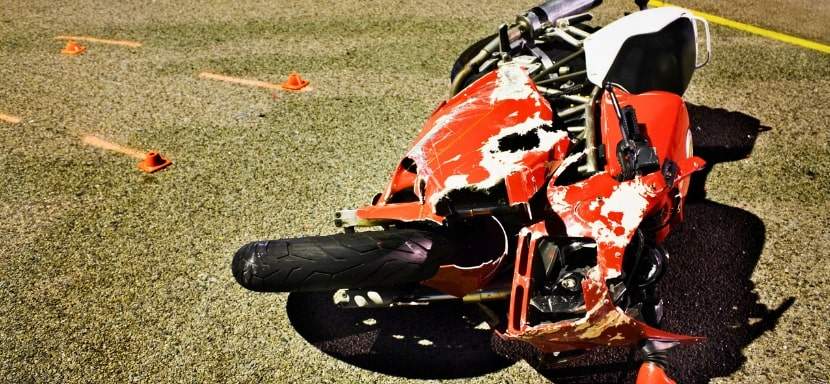
How to Survive a Motorcycle Accident
Life on two wheels is exhilarating, but let’s not sugarcoat it—motorcycle wrecks are a real risk. Whether you’re a seasoned rider or just learning, knowing how to survive a motorcycle wreck is crucial. By preparing beforehand, reacting wisely during the incident, and...
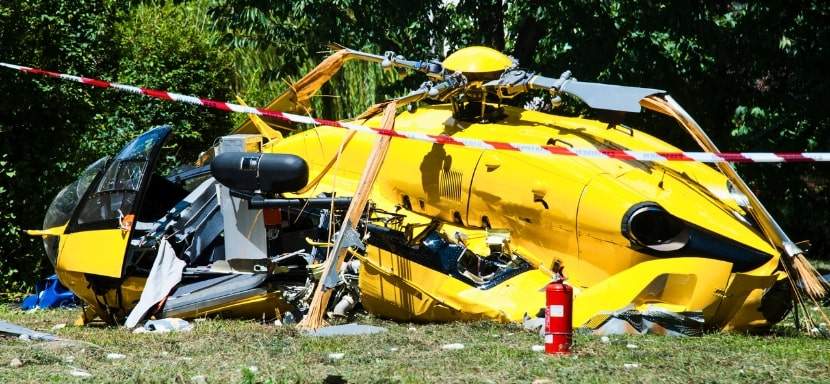
How to Survive a Helicopter Crash
If you ever find yourself in a helicopter plummeting toward the ground, the odds can feel stacked against you. You picture fiery explosions, wild spinning blades, and—worst of all—your life flashing before your eyes. But here’s the thing: helicopter crashes are...

How to Survive Being Stuck in an Airport
Travelers love airports, right? You walk in with dreams of quick security checks, ample seating, and maybe a lounge with bottomless snacks. But what if your dream turns into a drawn-out nightmare, and you're stuck there for hours? Or worse, overnight. We've all been...

How to Survive Jet Lag
We’ve all been there: you board a plane full of excitement, jet off to a far-flung destination, and when you arrive, you feel like you’ve been hit by a bus. This, my friends, is jet lag. A cruel reminder that while airplanes can soar at 600 mph, our bodies are...
More Survival Scenarios

How to Survive a Layoff
When the Floor Falls Out: The Reality of a Layoff Layoffs feel personal—even when they're not. One day, you're responding to Slack messages and forwarding emails. Next, you're staring at your monitor as it logs you out... for good. Whether it's a restructuring, a...

How to Survive a Drug Test
The Cup, The Room, The Truth I never imagined I’d be so emotionally invested in a paper cup. But there I was, standing under the fluorescent hum of a strip-mall clinic, trying to recall the last time I ate a poppy seed bagel. That’s the thing about drug tests—they...

How to Survive an Interrogation
If you've ever been caught in the crosshairs of an overly enthusiastic mall cop or stared down by someone in a uniform with a clipboard and a glare, you’ve felt it — the chilly fingers of interrogation anxiety. And while most of us imagine interrogation scenes as...

How to Survive a Nightclub Shooting
Nightclubs pulse with life—lights flashing, music pounding, bodies packed tight on the dance floor. It’s a place to escape, feel the rhythm, and lose yourself in the crowd. But that same energy can turn deadly in seconds, transforming a night of fun into one of the...

How to Survive a Bachelor Party
A bachelor party is a delicate mix of celebration, chaos, and questionable decision-making, wrapped in the noble intention of sending the groom off into married life with a night he’ll (hopefully) remember. It’s a ritual as old as time—well, as old as men deciding...

How to Survive Your First Time at the Gym
Walking into a gym for the first time can feel like stepping into an alien world. The machines hum with purpose, the regulars move confidently, and you’re left standing there, clutching your water bottle, wondering whether you’re in the right place—or on the right...

How to Survive a Worldwide Communications Breakdown
Imagine waking up to silence. Your phone doesn’t buzz, your email won’t load, and even your local radio station crackles with static. A worldwide communications breakdown has hit. What next? For many, this doomsday scenario may sound like the opening lines of a...
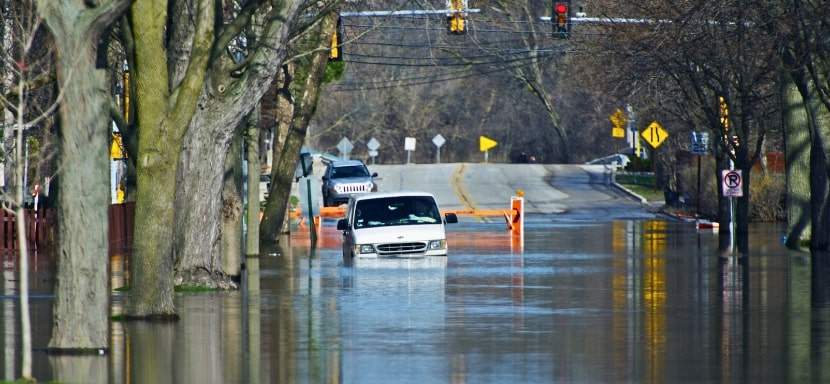
How to Survive a Flash Flood While Driving
Surviving a flash flood while driving requires quick thinking, calmness, and a solid plan to ensure your safety. Preparation can make all the difference between a close call and a catastrophe in emergencies like this. This guide provides practical advice to protect...
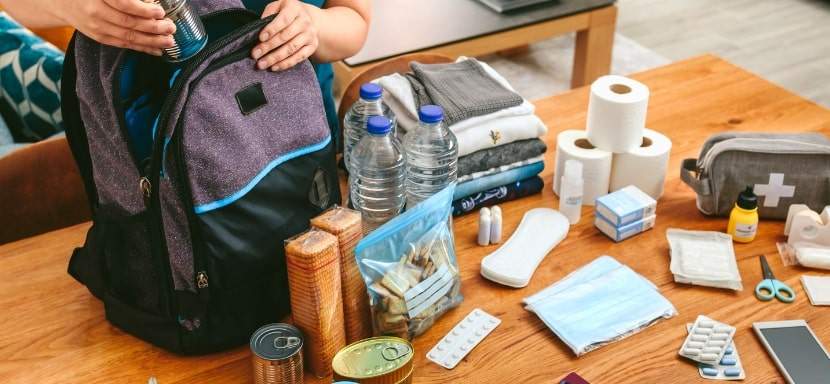
How to Build an Emergency Kit
Emergencies don’t knock politely at the door. They barge in, uninvited, like a distant relative with a penchant for drama, turning your world upside down without warning. Whether it’s a power outage, a natural disaster, or an unexpected evacuation, the key to staying...

How to Protect Yourself From Insects in the Wild
There’s nothing like being out in the wild—birdsong echoing through the trees, the fresh scent of earth, and a deep sense of peace that makes you think, “Ah, this is what life is about.” But then comes the buzzing. Mosquitoes, ticks, and flies swoop in like uninvited...
